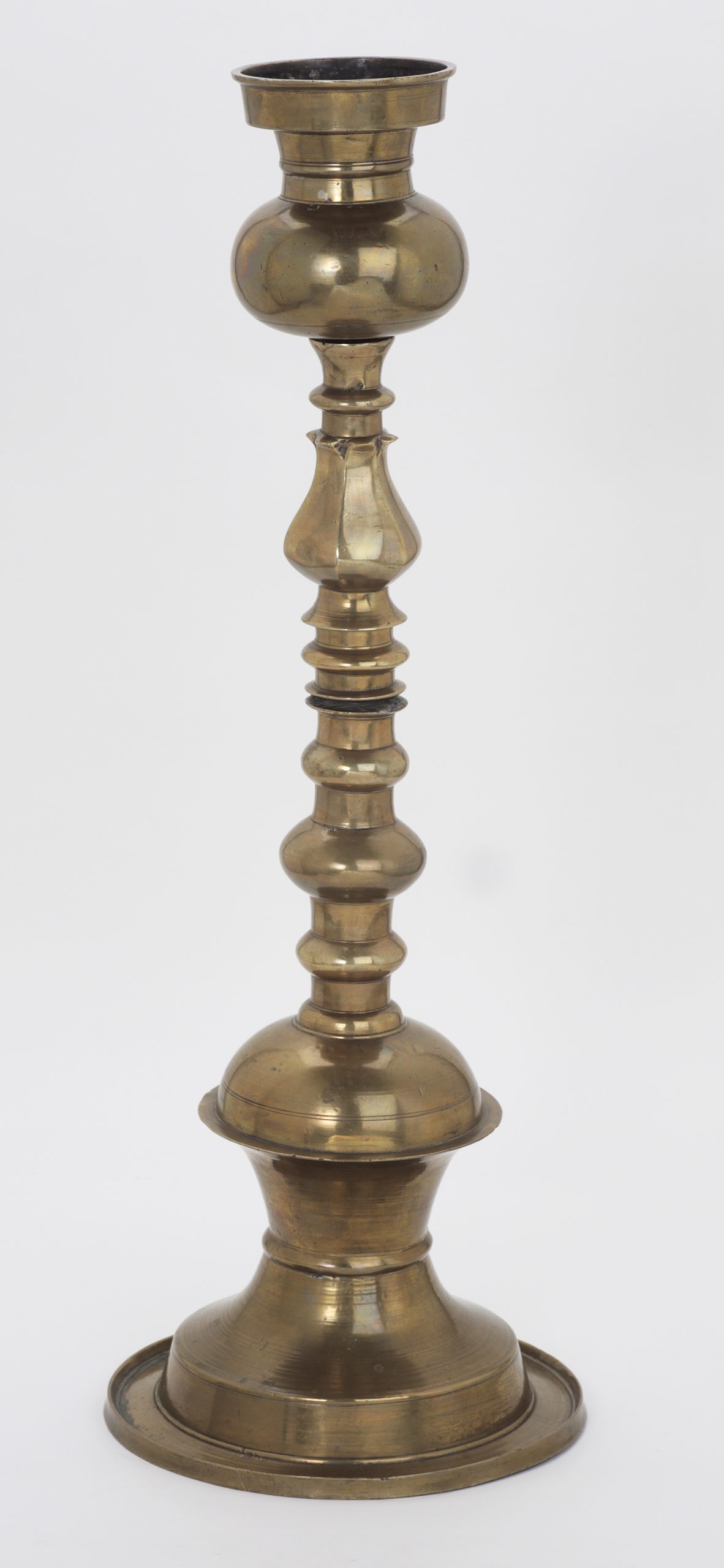 Print Page
Print Page
 Print Page
Print Page
Location: Ottoman Turkey
Materials: brass, cast in five reverse-threaded sections, with traces of gilding.
Dimensions: 93.5 x 33cm
Accession Number: MTW 1283
Other Notes:
This could have been used as a candlestick, a torch stand or an oil lamp, or as all three. Its shape, with a proliferation of knops and rings along its tall neck, almost suggests a piece of turned wood. Yet such detailing can be traced back to much earlier Islamic metal lampstands from 12th-century Iran and Egypt. The Ottoman variety, with its bulbous mouth and semi-globular foot, relates most closely, though, to a Timurid prototype such as that made in 1396–7 for the shrine of Ahmed Yasavi in at Gorod Turkistan in Kazakhstan by a metalworker from Isfahan [see MTW 1531]. The inclusion of a tulip-shaped boss is, however, an Ottoman innovation.
A close parallel in the British Museum bears an inscription in the name of Rüstem Pasha, the grand vizier and son-in-law of Süleyman the Magnificent, made for his mosque in the Greek fortress of Monemvasia, which was ceded to the Ottomans by Venice in 1540.
Bibliography:
J.M. Rogers, The Arts of Islam. Masterpieces from the Khalili Collection, London 2010, cat.349, pp.294–5.
